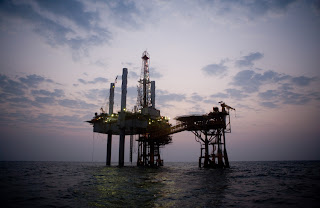As the second month of the third oil trading quarter of 2016, comes to a close both Brent and WTI futures remain in technical bull territory despite a recent cooling down of oil prices.
The Oilholic is struggling to find any market analysts – including those at UBS, Commerzbank, Morgan Stanley or Barclays to name a few – keeping their faith in (a) the oil producers’ talks pencilled in for end-September producing anything tangible, and (b) whether an output freeze would actually work with oil production in Russia and Saudi Arabia at record highs.
A real terms cut in production could provide a short-term boost to prices but it does not appear to be even a remote possibility at this point. Yet, the long callers continue to bet on an uptick if the latest US CFTC data is anything to go by. As the Oilholic pointed out in July, demand projections continue to head lower, so yours truly did ask the question in a recent Forbes piece – are the talks as much about stabilising oil supply, or a likely post-Sept dip in China’s demand.
As for viewing the oil price via the prism of demand permutations, Fitch Ratings’ latest assumption for ratings purposes just about sums it up. The rating agency assumes Brent and WTI will average $42 per barrel in 2016, up from its $35 base case in February.
“However, we do not believe that the rapid price recovery seen in the first half of 2016 will continue. The sub-$30 prices at the start of the year approached cash costs for many producers and were unsustainable in all but the very short term. Prices in the $40-$50 range allow most producers to break even on a cash basis, if not to cover sunk costs,” it added.
Furthermore, market expectations that US shale production will begin to rebound at prices above $50, will keep prices below that level until a supply deficit has eroded some of the inventory overhang.
Away from market shenanigans, another one of those research papers predicting there are no viable alternatives to oil and gas for meeting global energy needs arrived in the Oilholic’s mailbox. This one is from the Head of Petroleum Geoscience and Basin Studies research and Chair of Petroleum Geoscience at University of Manchester Dr Jonathan Redfern and energy recruiters Petroplan; overall an interesting read.
Sticking with ‘crude’ academic papers, another interesting one was published this month by Luisa Palacios of Columbia University’s Center on Global Energy Policy charting Venezuela’s growing risk to the global oil market.
The country’s problems are well documented, but Palacios claims glaring losses in oil production have "yet to translate into a commensurate fall in oil exports", due to the heavy toll taken by the economic collapse on domestic demand. (PDF download link)
Furthermore, the stability of exports reflected in the data in first half of the year "masks a deteriorating trend with June exports already more than 300,000 barrels per day lower than last year’s average."
Despite all the headline noise about Venezuela, the most severe risks to oil markets thus still lie ahead. Certainly food for thought, but that’s all for the moment folks! Keep reading, keep it crude!
To follow The Oilholic on Twitter click here.
To follow The Oilholic on Google+ click here.
To follow The Oilholic on IBTimes UK click here.
To follow The Oilholic on Forbes click here.
To email: gaurav.sharma@oilholicssynonymous.com
© Gaurav Sharma 2016. Photo: Oil platform © Cairn Energy Plc.





















